
- China’s efforts to rein in its housing crisis have proved costly for everyone. Beijing is now signalling the crackdown may have gone too far
China’s housing affordability problem is so entrenched that the massive crackdown on the once-frothy real estate sector has made little difference for residents such as Qian, a teacher in the hi-tech centre of Shenzhen.
For nine years, she has been sharing a two-room school dorm while saving to buy a flat in one of China’s most expensive cities. Although prices came down about 10 per cent after the recent market crash, her salary has been cut by 9 per cent. She still needs to save for a few more decades to afford her own place.
“I was frightened by home prices when I came to Shenzhen, and all the big policy changes didn’t give me any hope,” says Qian, 31, who declined to give her full name when discussing the sensitive topic. “The idea that I might stay as a dorm dweller until retirement terrifies me.”
Policymakers have led an unprecedented assault on China’s housing market. Restrictions on developer borrowing have largely achieved the goal of lowering financial risk by kneecapping overleveraged companies such as China Evergrande Group.
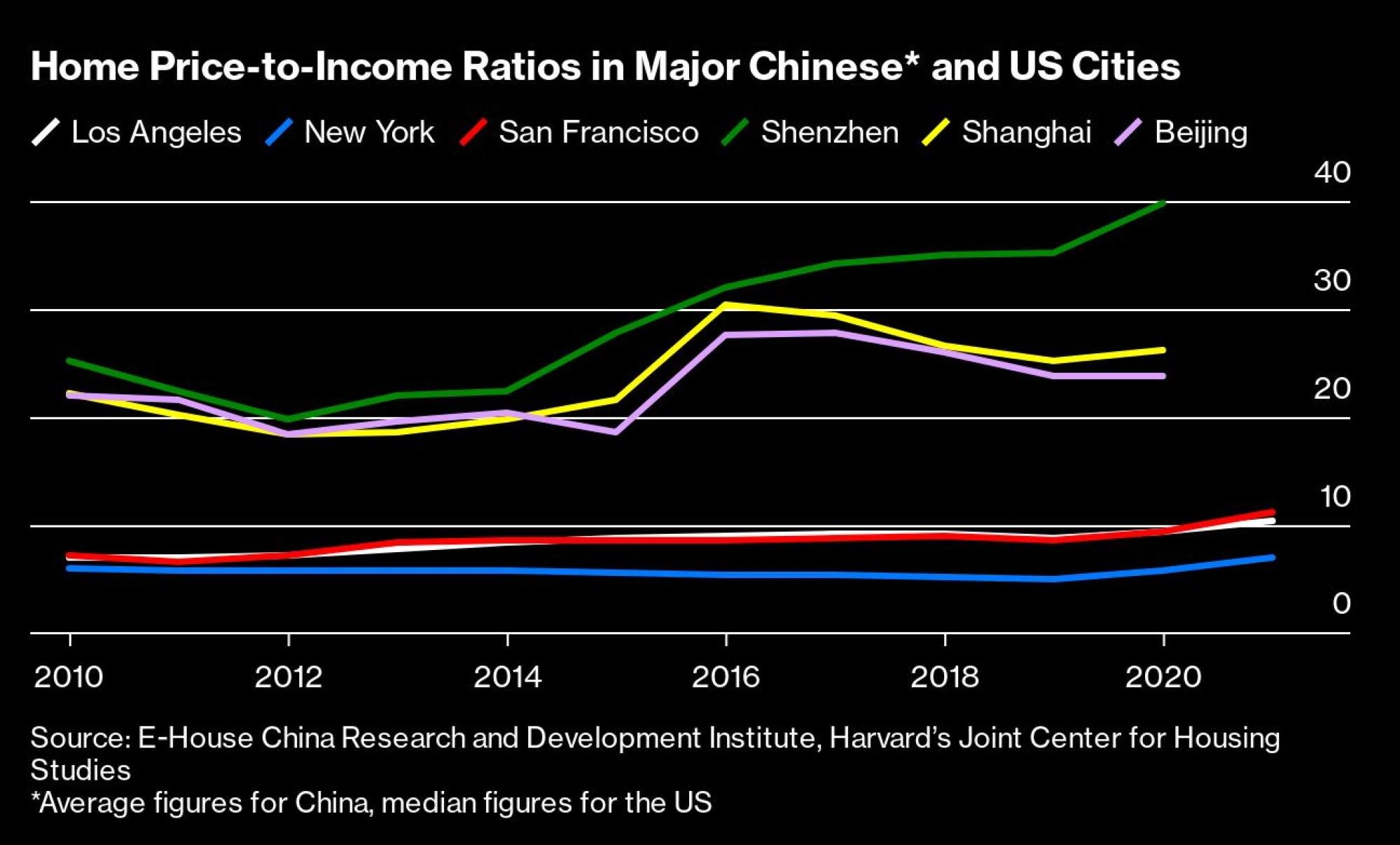
Yet on the key metric of affordability, so central to President Xi Jinping’s “common prosperity’” push, the results are mixed. For all the pain inflicted on bondholders and real estate companies, housing remains stubbornly expensive in the world’s most unaffordable market. Homebuyers are questioning whether it was all worth it.
Governments around the world are struggling to make housing more affordable. Surging prices and stagnant wages over the past few decades have pushed property out of reach for young buyers from Sydney to Stockholm.
For 19 countries in the Organisation for Economic Cooperation and Development, the average price-to-rent and price-to-income ratios are higher now than before the 2008 financial crisis.

China’s challenge is particularly daunting, even for an authoritarian regime with plenty of levers to pull. Home prices in Beijing and Shanghai have jumped tenfold and twelvefold, respectively, this century, according to government statistics, after the country’s economic opening prompted more people to park their life savings in real estate rather than in stocks or other investments.
The ratio of median home prices to income surged to more than 25 at the end of 2021 in Beijing, compared with about 20 in Hong Kong and just seven in the United States, according to research from Nordea Bank.
Nationally, the ratio in China improved slightly last year to 9.1 from 9.2 in 2020, according to E-House (China) Enterprise Holdings, a real estate firm.
In most Chinese cities, income is nowhere close to keeping pace with the cost of housing – a problem that is felt in many countries but is particularly acute in the world’s second-largest economy.

In Qian’s home of Shenzhen, a flat typically costs 40 times the average annual salary. That’s quadruple the relative price in cities such as Los Angeles and San Francisco, according to separate data from E-House and Harvard University’s Joint Center for Housing Studies.
In Shanghai, a 950 sq ft (88 sq m), two-bedroom condo sells for almost US$725,000. For about that price, a buyer could snap up a one-bedroom unit in Manhattan, where the average disposable income is more than six times higher.
Global measures to deal with the affordability problem have ranged from government subsidies to increased rental housing. Australia has imposed a foreign-buyers tax to keep prices in line, while Canada introduced a two-year ban on foreign purchases last month. Cities from New York to Berlin have attempted rental caps.
China’s moves have been more blunt – and costly – for the industry and investors. As early as 2016, Xi spoke of making “housing for living in” and not for speculation, while he pushed a housing model that emphasises renting.
What China’s Evergrande crisis means for its property market and the world
By 2020, “common prosperity” became the catchphrase to tackle inequalities, from income and education to housing.
The government has been trying to avoid the type of upheaval seen in Hong Kong, where the lack of affordable housing has led to a sense of hopelessness among young people. Expensive homes have even prompted many families in China to avoid having children, exacerbating a looming demographic crisis.
To bring the housing sector in check, Beijing introduced the so-called three red lines in 2020 to halt borrowing by developers unless they meet rigid financial targets and imposed lending limits on banks.
With credit markets largely closed, developers were forced to slow construction, and dozens defaulted on their debt. As the crisis spiralled, buyers became spooked, driving sales down by the most in at least two decades.

Beijing was betting the financial straitjacket and construction curbs would limit speculation, as the red-hot market had prompted some buyers to snap up two or three new condos as pure investments, pushing prices out of reach for many.
“So three red lines was a deliberate choice by them to try and squeeze the air out of the property bubble and improve affordability,” says Tom Orlik, chief economist at Bloomberg Economics.
But more than two years later, China’s efforts to reduce prices – or at least halt the increases – have had limited success.
New-home prices fell for the 15th straight month in November. Yet most of those dips have been too small to make much of a difference. November’s drop of 0.25 per cent in 70 cities was typical: none of the pullbacks has been greater than 0.4 per cent.
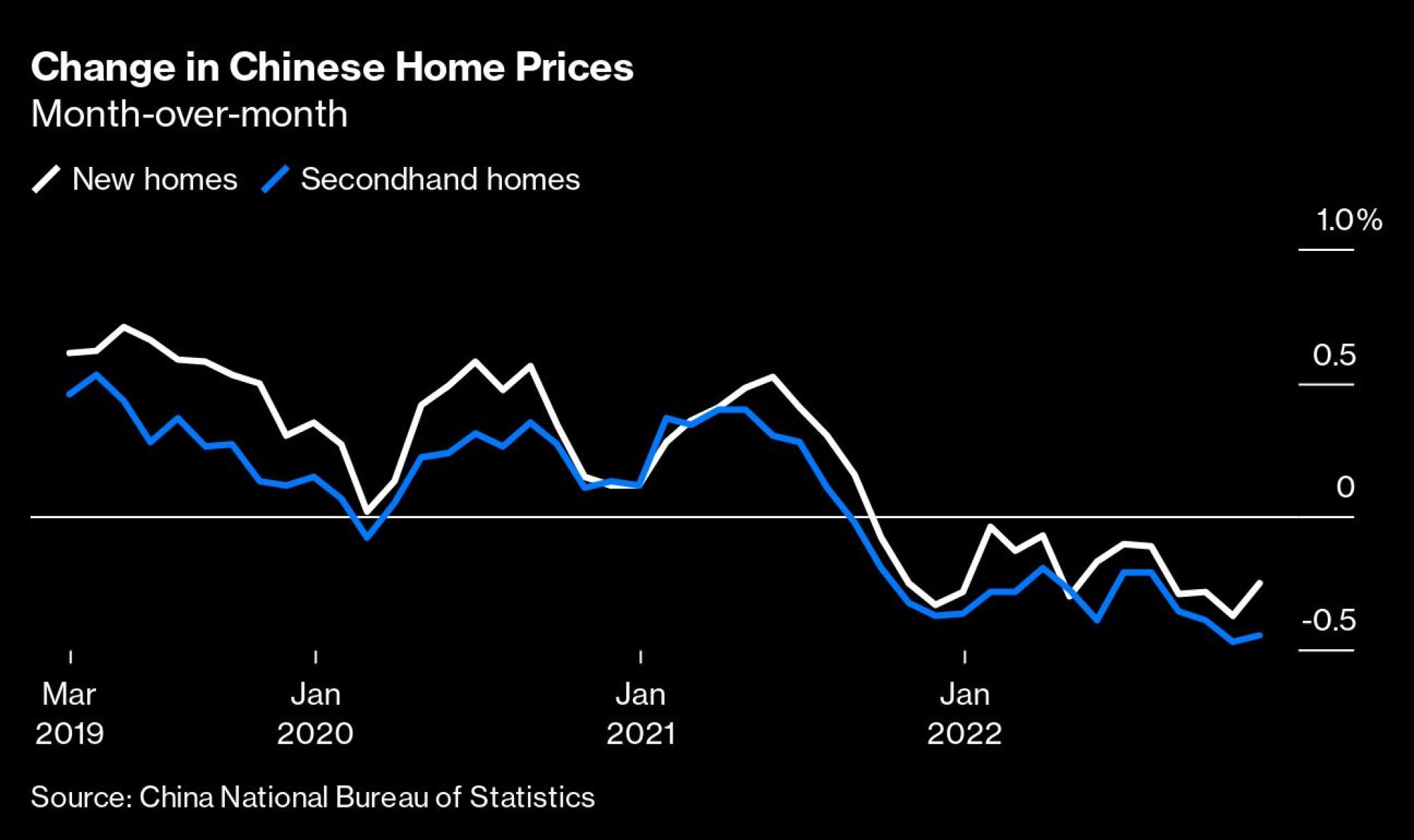
That steady drip of declines – more than 3 per cent over 15 months – compares with much sharper plunges in other markets as global interest rates surge.
Prices in Toronto are off 18 per cent from their peak, while Sydney is down 11 per cent. Sweden’s market is forecast to drop by a fifth from a March 2022 peak, according to Nordea estimates.
There are signs of steeper declines in parts of China. An existing-home price index tracked by KE Holdings shows that values in the less regulated market fell 7.5 per cent in August from a year earlier.
In Hangzhou, near the headquarters of tech giant Alibaba (owner of the South China Morning Post), existing-home prices are off more than 15 per cent from a 2021 peak, agents say.
It’s doubtful that the government anticipated what was going to happen or how long the consequences might lastEconomist George Magnus on China’s housing meltdown
The meagre national declines, even as sales collapse, partly reflect the quirks of China’s housing market that keep a floor on prices. Some 90 per cent of city dwellers own their homes, according to Goldman Sachs, compared with about 65 per cent in the US.
Ownership is so ingrained that a single man or woman has a much better chance of finding a match if they own a condo.
And cash is king. Down-payment requirements run as high as 80 per cent for big-city buyers, who save for years and tap parents for funds. That makes forced selling much rarer than in other countries, where downturns can push mortgages underwater, meaning the loan is worth more than the home.
Prices in China have been less volatile than sales and new construction, which have gone through boom and bust cycles several times this century.
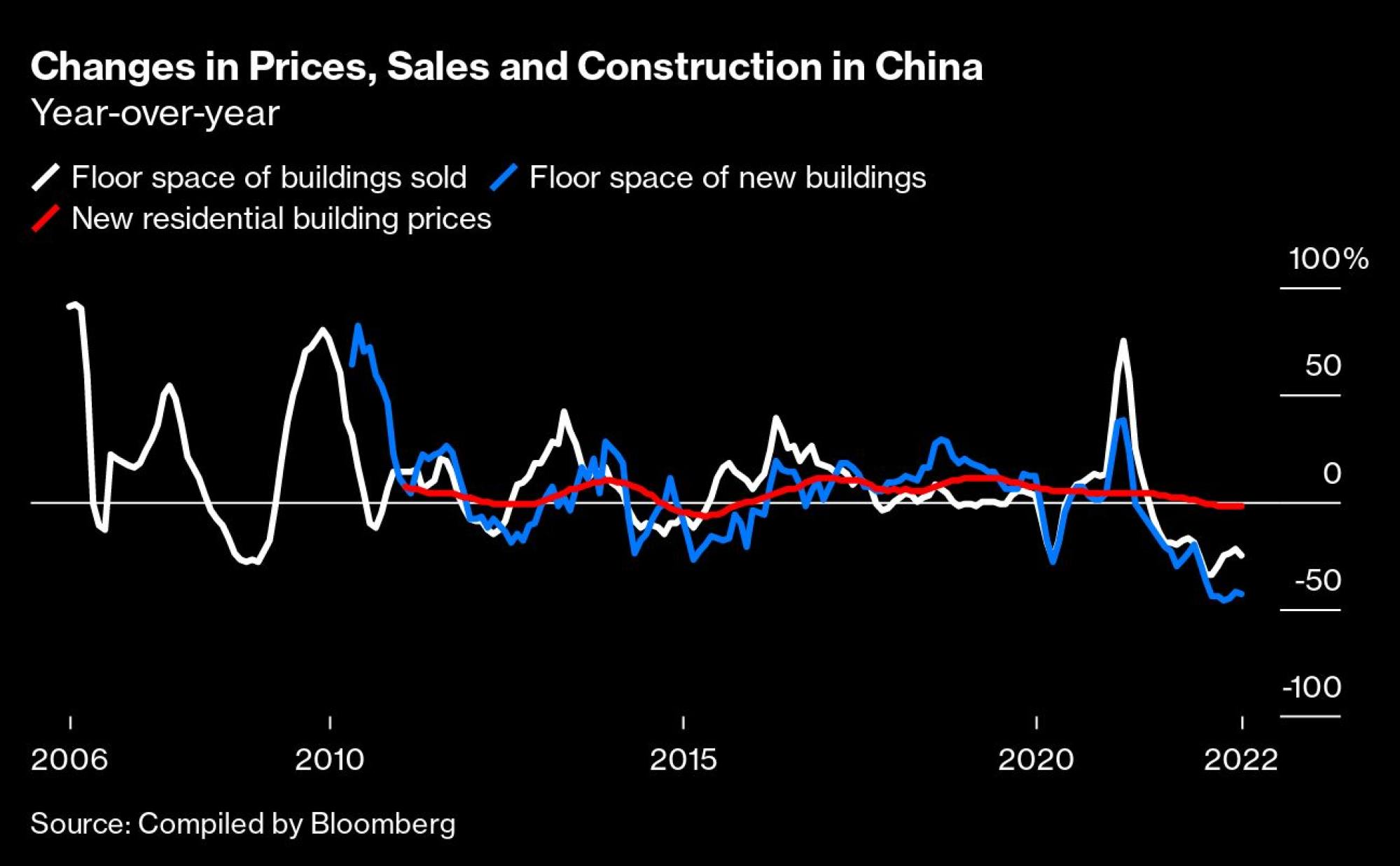
In fact, Beijing may prefer a steady price decline to a sudden crash that could wreak havoc on the financial sector and spark an even deeper crisis, says Orlik, author of China: The Bubble that Never Pops (2020).
China is trying to manage down the oversupply of homes as well as prices to bring the market into balance, he says. In other words, a “controlled deflation” of the bubble rather than a dramatic burst.
“If you want to improve affordability without having a systemic crisis, you don’t actually want house prices to fall. You want them to stabilise and incomes to rise,” says Orlik. “If prices fall 25 per cent and everyone sells their houses, then you have a systemic crisis.”
China is even trying to limit price declines in some areas. Since the second half of 2022, at least 20 small cities have blocked developers from slashing prices by more than 15 per cent.
That prompted an industry group in Guangdong province to petition authorities to loosen restrictions to boost sales, people familiar with the matter say.
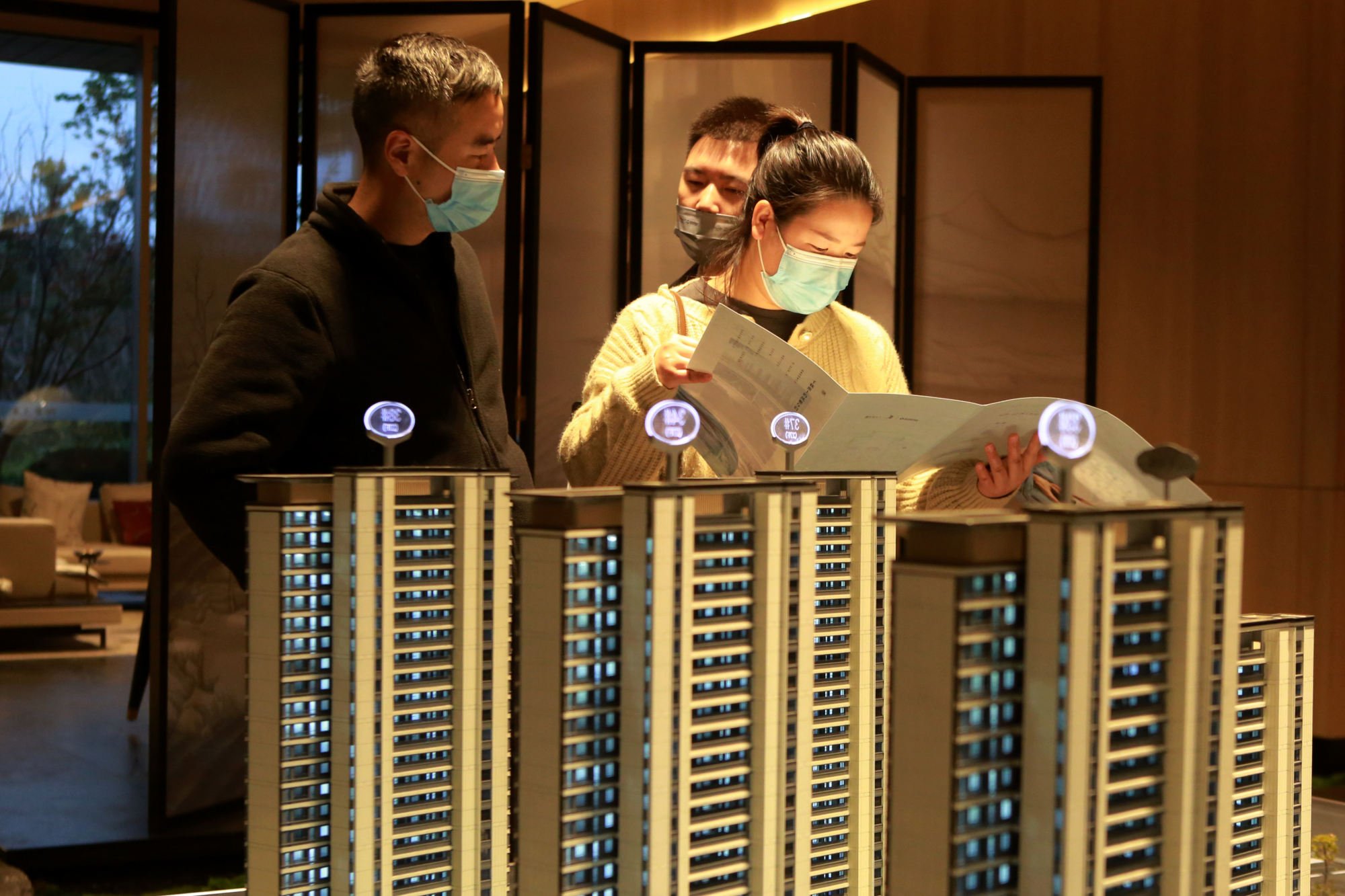
Affordability isn’t just about prices, of course – it is about housing relative to income. So even as prices inch lower, the staggering economic cost of the sector clampdown has offset some of those benefits as unemployment rises and wage growth stalls for people like Qian.
The housing meltdown, along with Beijing’s strict zero-Covid policies, pushed unemployment in the 31 largest cities to 6.7 per cent in November 2022. That is the highest since 2014, excluding a surge during early pandemic lockdowns.
The World Bank now sees economic growth of 2.8 per cent for 2022, about half of China’s own target and the lowest since the 1970s.
“Now that the bust has happened, it will weigh on China for a long time,” says George Magnus, independent economist and author of Red Flags: Why Xi’s China is in Jeopardy (2018). “It’s doubtful that the government anticipated what was going to happen or how long the consequences might last.”

It is hard to overstate the importance of real estate to China’s economy, making the crackdown so painful for so many. With estimates ranging from US$2.4 trillion for the new-home market to US$52 trillion for existing homes and inventory, the size of the sector was twice that of America’s in 2019.
Real estate accounts for about a quarter of domestic output and almost 80 per cent of household assets.
Some 100,000 companies operate in the sector, providing 27 million jobs as the nation’s second-biggest employer. Headcount shrank by 15 per cent in the first half of 2022 alone among the 28 publicly listed developers that disclose staff levels, according to data compiled by Bloomberg.
Those still employed face steep pay cuts, usually 30 per cent to 50 per cent, says Andy, a 36-year-old who works for a developer in Guangdong and asked that his full name not be used.
Chinese students pay for ‘guaranteed acceptance’ into elite US universities
His monthly mortgage obligations, at about 40,000 yuan (US$5,950), take up nearly 70 per cent of his income. He is now trying to unload one of his three homes.
“I’m willing to sell it as long as I can break even,” he says. “But it’s been a tough sell.”
Suppliers are also paying the price, with many fighting to get repaid by Evergrande and others. From construction material suppliers to lunchbox providers, thousands of small companies are feeling the pinch from the record housing slump.
“Putting on the brakes is one thing, but slamming the brakes on and making the car engine dead is another,” says Qin, a project contractor who has spent 13 months trying to get paid. He also declined to give his full name.
“Evergrande has a huge problem, but it should’ve been a ‘soft landing’ rather than what’s happening right now.”
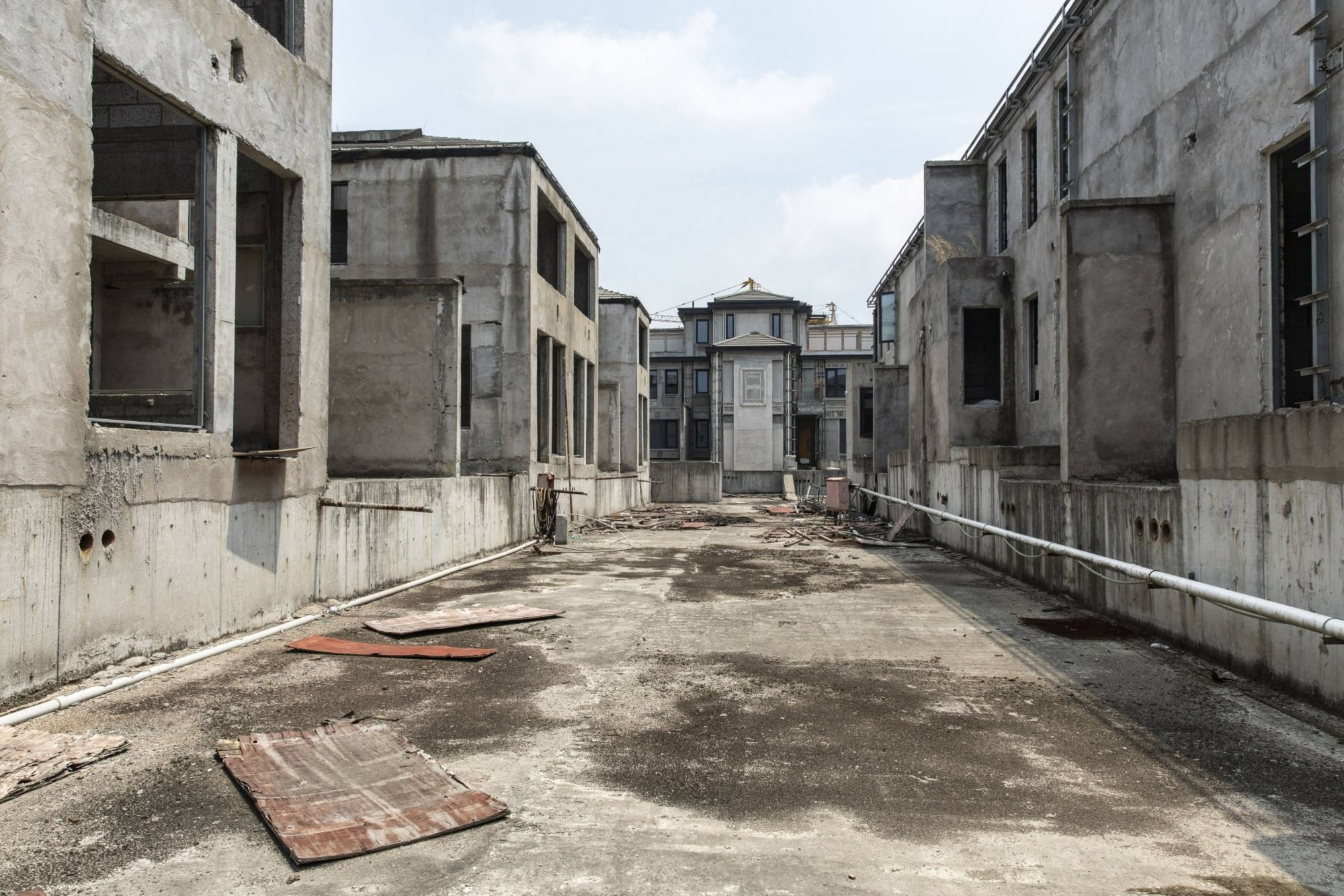
The modest price declines have done little to boost demand, which will be key to reviving the economy this year. CMB International Capital foresees a 30 per cent slump in flat and house sales, topping the 22 per cent drop during the 2008 financial crisis.
Investors, meanwhile, have borne the brunt of China’s property assault. Some 48 developers have defaulted on their bonds, leaving US$65 billion in unpaid debt this year to companies including Pacific Investment Management and Fidelity International.
What was once the most vibrant and lucrative high-yield bond market in the world – worth some US$200 billion – has been crushed.
Overall, the sell-off had wiped out US$268 billion in equity and US$116 billion in bond value as of the November 2022 market lows, before assets rebounded following a series of stimulus measures.
UBS estimates the slump will cost the banking system as much as 1.5 trillion yuan (US$223 billion) on loans, bonds and other assets. The sales slump projected by CMB International would translate to US$682 billion in housing activity erased. All told, that is almost a US$1.3 trillion hit.

Beijing is now signalling the crackdown may have gone too far. The government unveiled a host of measures to get cash flowing again to the stronger, mostly state-owned developers and to get stalled projects completed after hundreds of thousands of homeowners boycotted mortgage payments to protest delays.
Longer term, China is targeting rental housing for recent graduates and new urban dwellers to ease the affordability crunch, vowing to build 6.5 million units in 40 cities by 2025. Everbright Securities estimates that will cost US$200 billion.
All of this points to China entering a “peak period” of government-led affordable-housing construction, says Li Jun, CEO of government-backed builder Greentown Management.
“State-owned developers will swiftly expand to become the absolute dominant party in the housing market,” Li says. “Many private real estate firms will inevitably be squeezed out.”
How Chinese gangsters operate freely in Laos’ Golden Triangle economic zone
In the meantime, homeowners such as Chen Duo have only seen modest benefits from the policy shift. She and her husband settled on a two-bedroom condo outside Shanghai for about US$310,000. The prices for similar flats downtown were beyond reach, even with recent price drops.
“I think the overall policy direction is right, making sure a home is for living, not for speculation,” the internet worker says. “But so far we’ve seen just bread and circuses. There’s not much change in terms of housing affordability.”
